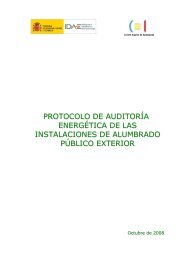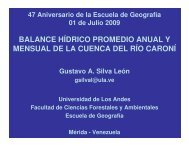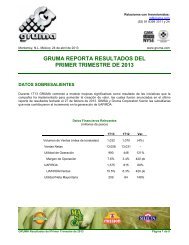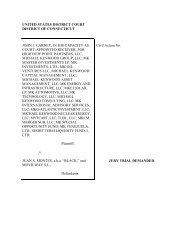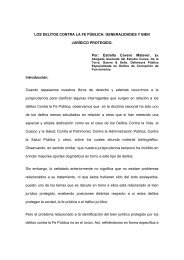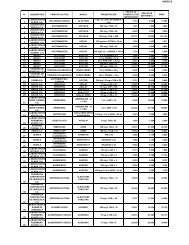broschuere ee zahlen en bf
broschuere ee zahlen en bf
broschuere ee zahlen en bf
You also want an ePaper? Increase the reach of your titles
YUMPU automatically turns print PDFs into web optimized ePapers that Google loves.
Structural chall<strong>en</strong>ges: Expansion of electricity, heat and gas networks<br />
In order to implem<strong>en</strong>t the expansion of r<strong>en</strong>ewable <strong>en</strong>ergy, it will be necessary to invest in distribution<br />
and transport networks, <strong>en</strong>ergy storage facilities and flexible gas-fired power plants<br />
to m<strong>ee</strong>t residual load requirem<strong>en</strong>ts. Moreover, the guiding principle of largely r<strong>en</strong>ewable <strong>en</strong>ergy<br />
supplies for all sectors consists in intellig<strong>en</strong>t interlinking of power, gas and heating networks.<br />
For the electricity grids, high-voltage direct curr<strong>en</strong>t transmission (HVDC) is an interesting<br />
option for long-distance transport of r<strong>en</strong>ewable electricity. To some ext<strong>en</strong>t the fluctuating<br />
supply of electricity from wind and solar sources can also be offset by g<strong>en</strong>eration and<br />
load managem<strong>en</strong>t.<br />
Developm<strong>en</strong>t of electricity g<strong>en</strong>eration from r<strong>en</strong>ewable <strong>en</strong>ergies in basic sc<strong>en</strong>ario 2010 A<br />
r<strong>en</strong>ewables-based electricity g<strong>en</strong>eration [tWh/a]<br />
400<br />
350<br />
300<br />
250<br />
200<br />
150<br />
100<br />
50<br />
0<br />
source: [134]<br />
eU grid interconnection<br />
Geothermal <strong>en</strong>ergy<br />
photovoltaics<br />
Biomass/biog<strong>en</strong>ic fraction of waste<br />
Wind <strong>en</strong>ergy at sea (offshore)<br />
Wind <strong>en</strong>ergy on land<br />
hydropower<br />
16 %<br />
2000<br />
2001<br />
2002<br />
2003<br />
2004<br />
2005<br />
2006<br />
2007<br />
2008<br />
2009<br />
sc<strong>en</strong>arIo For Increased expansIon<br />
40 %<br />
2010<br />
2011<br />
2012<br />
2013<br />
2014<br />
2015<br />
2016<br />
2017<br />
2018<br />
2019<br />
2020<br />
2021<br />
2022<br />
2023<br />
2024<br />
2025<br />
2026<br />
Expansion of local heating networks makes it possible to exploit the great pot<strong>en</strong>tial of combined<br />
heat-and-power g<strong>en</strong>eration (co-g<strong>en</strong>eration), especially using biomass. Further network<br />
expansion reduces, but cannot completely solve, the problem of storing electricity from r<strong>en</strong>ewable<br />
sources. In addition to short-term storage, large-capacity long-term storage is n<strong>ee</strong>ded<br />
to smooth out fluctuations in largely r<strong>en</strong>ewables-based electricity g<strong>en</strong>eration. Chemical storage<br />
of r<strong>en</strong>ewable electricity is particularly well suited to this task. The <strong>en</strong>ergy sources hydrog<strong>en</strong><br />
and methane are capable of overcoming the limits set by the fluctuating supply of r<strong>en</strong>ewable<br />
electricity and <strong>en</strong>suring reliable <strong>en</strong>ergy supplies at all times with a high perc<strong>en</strong>tage<br />
of r<strong>en</strong>ewable electricity. R<strong>en</strong>ewable electricity, the future “primary <strong>en</strong>ergy”, can be stored for<br />
w<strong>ee</strong>ks and months by linking power and gas grids and made available for motor fuels and<br />
high-temperature heating.<br />
R<strong>en</strong>ewable Energy Sources in Figures<br />
66 %<br />
2027<br />
2028<br />
2029<br />
2030<br />
55




